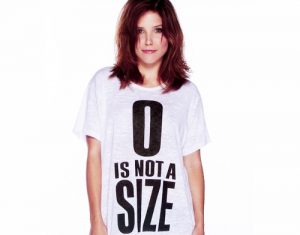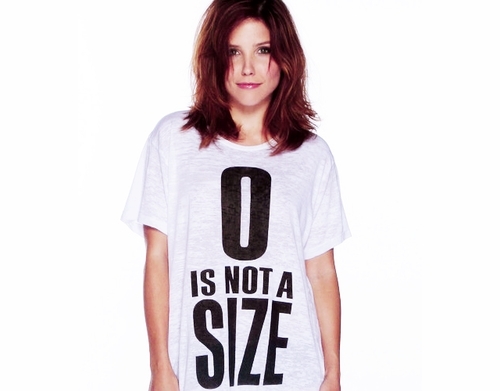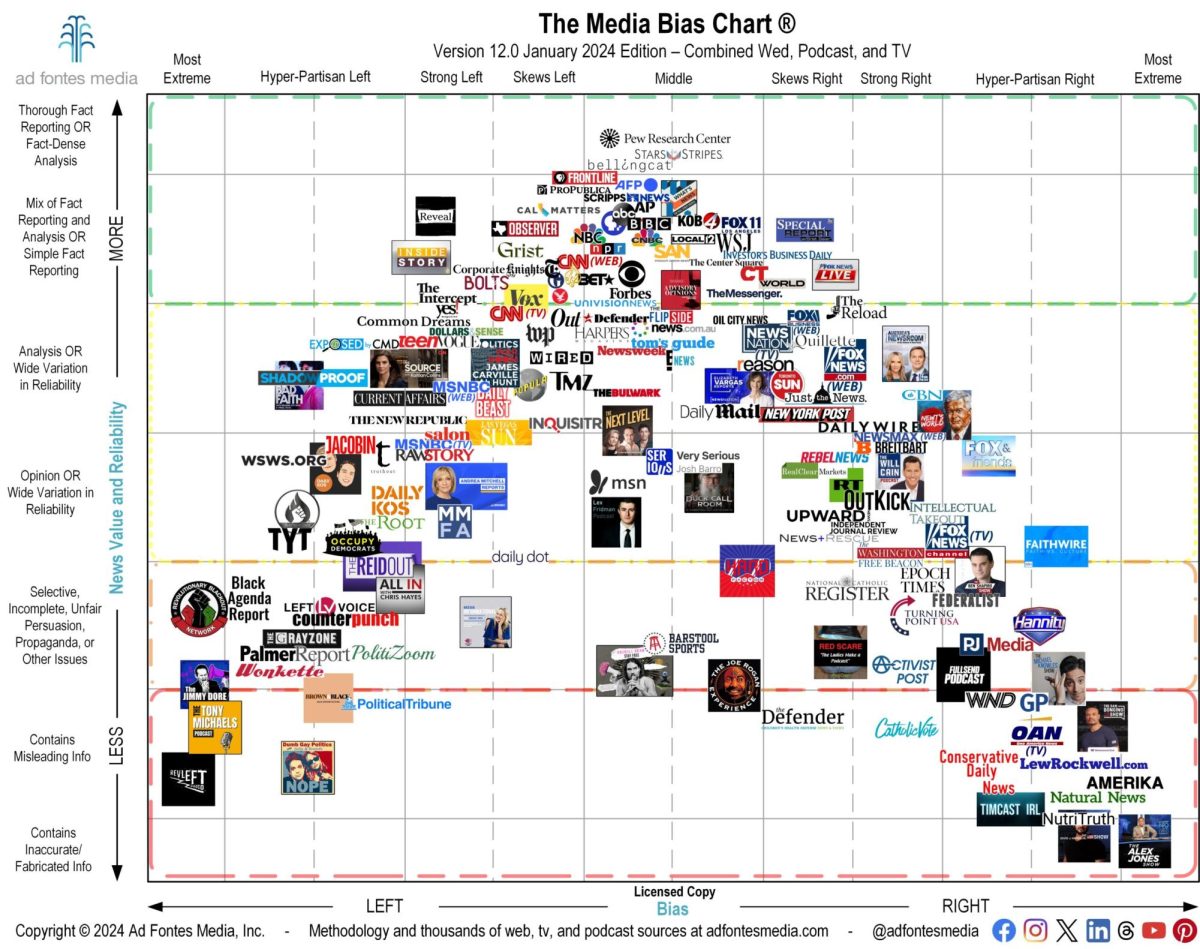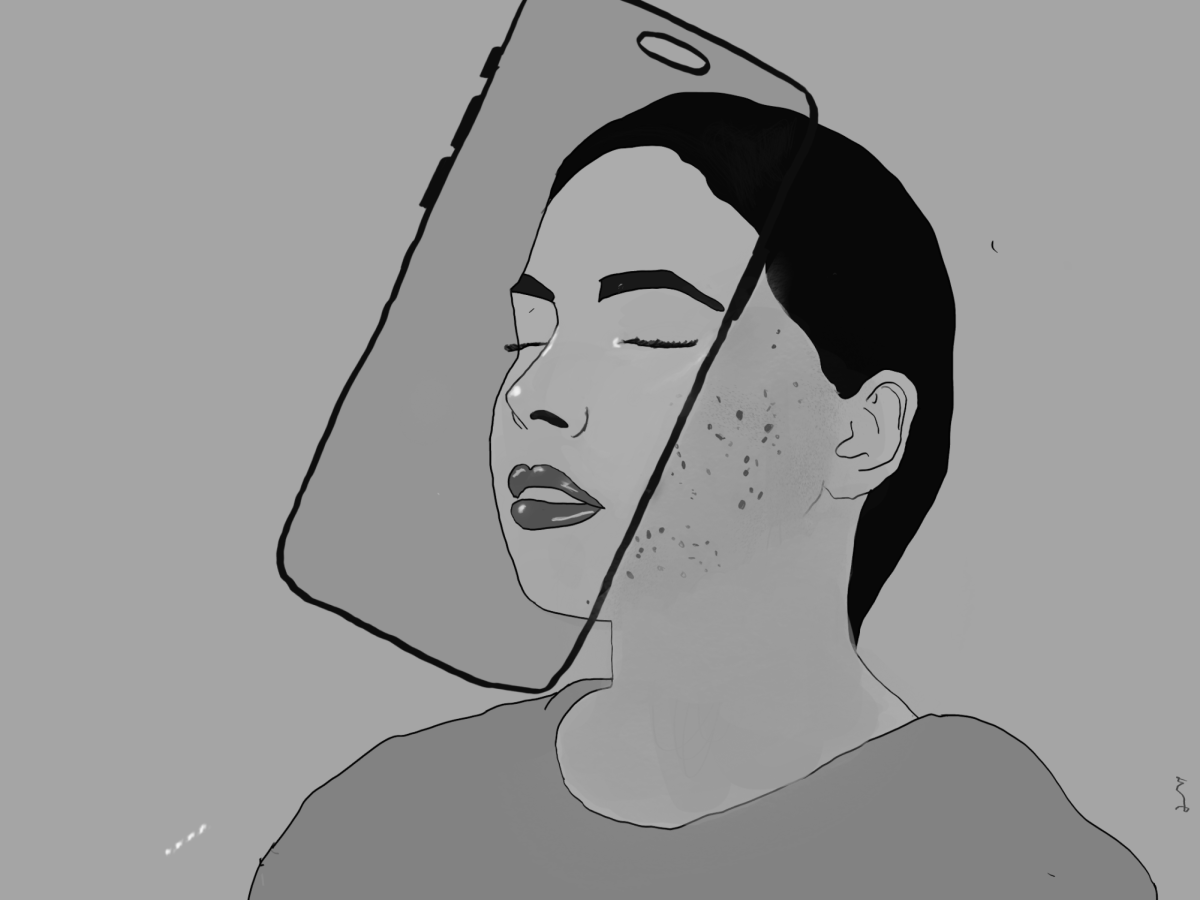
Within modern media, society continuously sexualizes women and holds them to unattainable standards in terms of physical appearance, whether they’re aware of said standards or not. The looming influence that cultures unhealthy body image in the minds of teens is greatly due to the conflicting messages conveyed by retail companies and prominent members of pop culture.
If one observes the sizing ranges and various endorsement within the clothing industries and realm of entertainment world, double standards for both girls of a petite figure or plus-sized figure may be clearly discerned. Although intolerance for obesity once reigned as the sole diminishing factor in terms of a woman’s self confidence, there is a growing prevalence of intolerance for girls with a petite frame—deemed “skinny shaming.” Both influences are continuously observable in the material world, which primarily consists of the opinions of figures within the entertainment world, and the marketing of commercial clothing companies wherein young women are usually consumers.
The reactions of various clothing stores in terms of healthy body image vary greatly, and bluntly demonstrate the conflicting messages being fed to young women. Throughout the period of time wherein the shaming of overweight girls was combated, many retail stores widened their size selection. The popular store Forever 21 offers both a petite section of their store, as well as a plus size section which both supply an ample clothing selection, and, in turn, exemplifying the equal acceptance that should be demonstrated to young women. On the opposite end of the spectrum, the chain Brandy Melville markets “trendy” and popular clothing that is solely one size fits all—a sizing that is far from the truth. To further disprove their sizing, all the models are very tall girls who would only fit into a size 00 to 4. More interestingly, the very popular American Eagle brand markets to sizes ranging for XXS to XXL, and appears accepting of all shapes and sizes; however, they recently began their own clothing collection which, like Brandy Melville, only offers one size fits all clothing. Despite the abundance of clothing solely marketed to skinny women, the trend of skinny shaming is significantly notable in different forms of media.
The effects of skinny-shaming are prevalent amongst pop culture figures with the release of actress Sophia Bush’s t-shirt that reads “zero isn’t a size.” Furthermore, both pop artists Meghan Trainor and Nicki Minaj released popular tracks which skinny shame in and of themselves. Trainor sings “go ahead and tell them skinny b*tches…’cause I got that boom boom that all the boys chase, all the right junk in all the right places” in her single “All About That Bass.” Immediately after, she remarks that she is joking and girls should love their bodies no matter its appearance. This fleeting remark only perpetuates the growing notion of taking body image lightly and one, especially celebrities, not needing to take responsibility for their harmful remarks. Likewise, Minaj’s entire track “Anaconda” emphasizes the superiority and sexuality of having a large butt and curves. Celebrities seem to knowingly use their public influence to endorse their own body types as superior, rather than promote overall confidence in the young adults listening. On the other end of the spectrum, Demi Lovato publicizes her own personal struggles with body image and mental health to further the idea that eating disorders and mental disorders associated with body image are prevalent and are ok to admit. She stands as a symbol for the realistic side of female body image and works to speak out against the harmful influences of modern entertainment and advertisement.
It is growingly clear, that not matter what size, young women are shamed due to their figure, and, in turn, will never be able to achieve a sound sense of sexuality and self confidence by the standards of modern retail and media. In the future, our society has to be weary of and take tangible action against the harmful effects of venerating the “ideal” body image in order to remind girls that their worth comes from more than their physical appearance.














